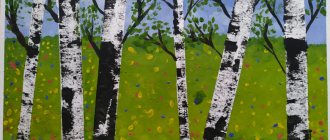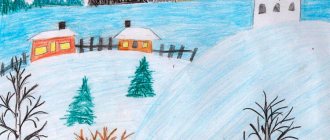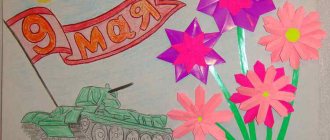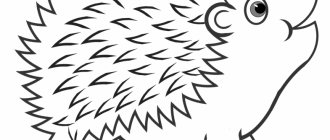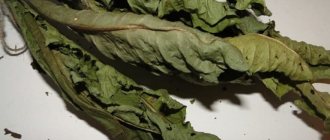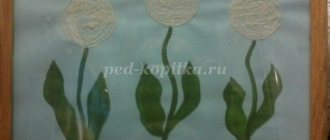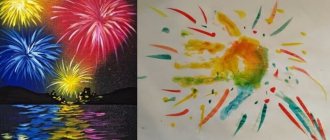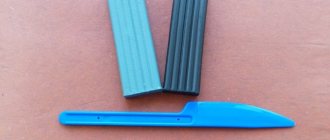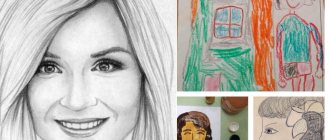How to draw a dandelion with paints step by step for children
Master class on drawing for children 4-6 years old “Dandelion”
Author: Victoria Aleksandrovna Ostanina, teacher of the Children's Preschool Educational Institution DS KV "Rainbow" JV "Silver Hoof" Purpose: Performing a drawing using an unconventional technique. Objectives: - get acquainted with an unconventional drawing technique - the “poke” method; — develop creative abilities; — learn to be careful when working with gouache. Purpose: This master class will be useful for educators, additional education teachers, and primary school teachers. It can also be used by creative people and parents who independently study with their children. Description: The master class gives you the opportunity to draw a flower yourself - a dandelion. Does not require special artistic skills. A detailed description and step-by-step photos will make the drawing process easy and effective. Materials: A4 sheet, gouache, water glass, cotton napkin, brush No. 5 bristles, brushes No. 3, No. 5 (goat, squirrel).
Progress: Summer! Summer! Summer is around! So many bright colors, fragrant herbs and colorful flowers. The beauty of the Ural nature is simply mesmerizing! Sineva cornflowers,
sunny beauty of dandelions,
delicate white daisies!!!
How many fragrant herbs, crackling grasshoppers and humming dragonflies... Today we will draw.... A riddle will tell us what we draw! “In childhood, with a yellow head, In youth, completely gray-haired, But he never gets old, He flies away in white fluff!” (E. Telushkina) Of course it’s a dandelion! He's so handsome!
Dandelion is familiar to us as a small sun and white fluff.
And if you blow on it, it will fly apart.
And its seeds scatter far around. You and I will draw a dandelion like this:
Or maybe not exactly like that, let’s add some white dandelions! For work we need a white sheet of paper, gouache, three brushes: ordinary squirrel brushes No. 3 and No. 6, and hard bristles No. 5, a glass of water and a cloth napkin.
We will draw the stem and leaves in the usual, familiar way. But the flowers are made using an unconventional method - the “poke” method. This method is used for drawing furry animals, flowers, images of snow, fireworks. It is unusual in that before starting to paint you should not dip the brush in water; this is a dry method of painting. We immediately dip a dry brush into gouache, it is most suitable, but we must remember that the gouache should be thick and not dry. You only need to dip the tip of the brush into the gouache. We hold the brush strictly vertically, apply the design by applying the brush to the sheet, as if “poking” into it. Hence the name - the “poke” method. We make the first “poke” on an additional sheet so that subsequent “poke”s are of a uniform color. The space designated for the flower should be filled evenly, placing the “pokes” close to each other, trying not to leave gaps and without overlapping them. And one more little secret: the end of the brush needs to be trimmed a little so that it is flat, not rounded or sharp, but straight. Then the “poke” will be fluffier. I suggest trying it on an additional sheet, making a few pokes, filling out an imaginary form. Have you tried it? Then go ahead! Towards creativity! Progress:
1. Let's make the background. We need brush No. 5, blue gouache, water. Wet the sheet with water using a brush and apply the color evenly. We try to leave the edge of the sheet white on all sides - this will be the frame.
Let the sheet dry. The background is ready. 2. Place the sheet vertically. With brush No. 3 we draw the stems.
3. Now the leaves. First we draw the outline.
Now let's fill it with color.
4. Now we will draw a yellow dandelion. We need a bristle brush and yellow gouache. Don’t forget the features of the “poke” method and start drawing a flower. Remember, the brush is positioned strictly vertically in relation to the sheet! And “poke”, “poke”, “poke”!
Here is our living sun!
5. Draw a fluffy dandelion with white gouache.
And another fluffy one.
Let's decorate the leaves with a thin brush along the contour. The work is ready!
You can draw other versions of the dandelion.
This is how they look together.
And here is a field of dandelions.
My kids immediately noticed these works on the wall in the group and wanted to draw too! I want to present you the best work! It was performed by Ekaterina Ermakova. She is only five years old, but she did her job completely on her own! This is her dandelion!!!
We created a mini-exhibition in the group!
Beautiful? Join us! Create like us, do better than us!
We recommend watching:
Hand drawing for children 3-7 years old. Dandelions How to draw lilies of the valley with gouache step by step Drawing for children 8-10 years old. Bouquet of daisies step by step with photos Master class on drawing for children 5-7 years old “Fairytale flowers in a lace frame” step by step with photos
Similar articles:
Drawing lesson for children 6-7 years old. Drawing Dandelions
Drawing dandelions in the preparatory group
MAGAZINE Preschooler.RF
Open drawing lesson “Dandelion”Municipal preschool educational institution combined type kindergarten N 50 “Ogonyok” Moscow region, Dmitrovsky district, pos. Iksha, Middle group No. 7
Completed and prepared by Educator: Bondareva A.V. 2016-2017 academic year year
Goal: Learn to draw dandelion flowers using the poking method.
Task:
- strengthen children's ability to paint leaves with the tip of a brush
- expand children's knowledge about the first spring flowers.
- Enrich children's vocabulary and instill an interest in poetry.
Materials: green A-4 paper, yellow gouache, two brushes, hard and soft, napkins for each child, a water container, a picture of dandelions.
Preliminary work: Observing spring changes in wildlife. Looking at dandelions while walking, reading the educational fairy tale “The Dandelion and the Wind .
Progress of the lesson: Guys, come in, hello guys. Look, we have guests. Let's say hello .
Educator: What time of year is it now?
Children: Spring.
Educator: By what signs did you know that it is spring? (the sun is shining warmer, the birds have arrived, the buds have blossomed on the trees, the grass has turned green, the first flowers have bloomed).
Educator: What spring flowers do you know?
Children: snowdrops, coltsfoot, dandelions.
Dandelion is a field plant. Therefore, it can be found more often in meadows, fields, parks, and forests.
He will read the poem “Dandelion” .
The sun dropped a golden ray. The dandelion grew - the first, young one. It has a wonderful golden color. He is a big sun, a small portrait.
Educator: Did you like the poem? What was the poem about? Let's look at what a dandelion looks like, what shape it is (in the sun, round.) What parts does the flower consist of? (Stem, leaves, flower, root.) That's right, well done.
Educator: Now sit down at the tables and let’s start drawing.
Educator: Look in front of you at a sheet of green paper, two brushes, one hard and the other soft, and the gouache is yellow and green. From the beginning we need to draw dandelion flowers using the poking method. We'll start with a hard brush, dip it in water, take yellow paint and paint a dandelion using the poking method. The petals of this flower are long, thin, and jagged. Start drawing by drawing a thin strip pointing upward with a sharp end. Then we will add teeth on the sides of the base, depicting the correct shape of the leaf.
Educator: Let's do finger exercises with you, and let the dandelions dry out. Leave the table and move your chairs.
Our delicate flowers (fingers clenched into a fist) open their petals. (fingers in different directions) The wind is breathing slightly, (children blow lightly) The petals are swaying. (shakes hands)
Our delicate flowers. They close the petals (clench their fists again) shake their heads, (shake their fists) Quietly fall asleep. (remove your hands from the table)
Educator: Now sit down at the tables. Our dandelions have dried up. Now we will paint the stem and leaves with a soft brush and green paint. The petals of this flower are long, thin, and jagged. Start drawing by drawing a thin strip pointing upward with a sharp end. Then we will add teeth on the sides of the base, depicting the correct shape of the leaf.
Educator: Guys, do you know that the time comes, and the yellow petals are replaced by white fluff.
- Golden and young In a week, he turned gray. And after two days my head went bald.
— Dandelion is a very correct flower. He wakes up and goes to bed with the sun. In cloudy, rainy weather, the dandelion does not open its petals, keeping them closed. Insects also love dandelions. Bumblebees and butterflies drink sweet dandelion nectar. Bees collect pollen and make dandelion honey.
Result:
- Let's remember what we did with you in our lesson?
— What did you like most?
— What do bees collect from dandelion flowers?
“All the guys did their best today.” Well done! Now let's look at our drawings together.
Sources:
- Bondarenko T. M. Ecological activities with children 4-5 years old. – Volgograd, Teacher, 2006
- Lykova I.A. Visual activities: planning, lesson notes, methodological recommendations. Middle group. – M.: Karapuz-Didaktika, 2006. – M.: Vlados, 2001.
- Koldina D.N. Drawing with children 4-5 years old. Lesson notes. – M.: MOSAIC-SYNTHESIS, 2014.
- From birth to school
| Next > |
Lesson 84. Painting “Dandelions in the grass”
Program content. Induce in children a desire to convey in a drawing the beauty of a flowering meadow and the shape of flowers. Practice painting techniques with paints. Strengthen the ability to carefully rinse the brush and dry it on a cloth. Learn to enjoy your drawings. Develop aesthetic perception and creative imagination.
Methodology of conducting the lesson. Remember with your children how they admired the blooming dandelions on a walk; find out what color the dandelions are; examine a dandelion flower and determine its shape.
Ask how you can draw dandelion flowers. Call the child to show to the board. Then ask how you can draw a dandelion stem and call another child to show it to the board.
Invite children to draw flowers all over a sheet of paper. To say that you can draw dandelions in different ways: first you can depict a stem with leaves, then a flower, or you can start drawing with a flower, which can also be depicted in different ways.
Place the finished drawings on the board. Admire them with your children and note how beautiful the dandelions look in the green grass.
In conclusion, read E. Serova’s poem “Dandelion” (or any other poem on the topic).
Materials. Landscape sheets of green paper, yellow and green gouache paints; brushes, jars of water, napkins (for each child).
Connections with other activities and activities. Learning the poem “Dandelion” by E. Serova, looking at illustrations in children’s books. While walking, looking at the first flowers to appear. Game "Find the same flower."
Lesson 85. Modeling “Duckling”
Program content. Teach children to sculpt an object consisting of several parts, conveying some characteristic features (an elongated beak). Practice using pinching and pulling techniques. Strengthen the ability to connect parts by pressing them tightly together.
Methodology of conducting the lesson. Examine a toy duckling with the children; highlight the parts of the figurine, examine their shape, pay attention to the details: the tail raised at the corner, the large beak rounded at the end.
Compare duckling and chicken; determine how they are similar and how they differ (the duckling has a more elongated beak and tail). Show the pulling technique. Remind children how to firmly connect parts. During the sculpting process, achieve a more distinct transfer of the shape of the parts.
Materials. Toy duckling. Clay, boards (for each child).
Lesson 86. Painting according to plan
Program content. Develop independence in choosing a topic. Teach children to introduce elements of creativity into their drawings, select the right colors for their drawings, and use the acquired skills and abilities in their work.
Methodology of conducting the lesson. Talk with the children about what they want to draw today, what techniques they will use, what paints they will need.
When analyzing children's works, highlight those in which independence and creativity are clearly visible.
Invite the children to talk about their work. Mark the successful color scheme of the drawings.
"House"
Petya S., 2nd junior group
Materials. Tinted paper; gouache paints red, white, blue, yellow, green; brushes, jars of water, napkins (for each child).
